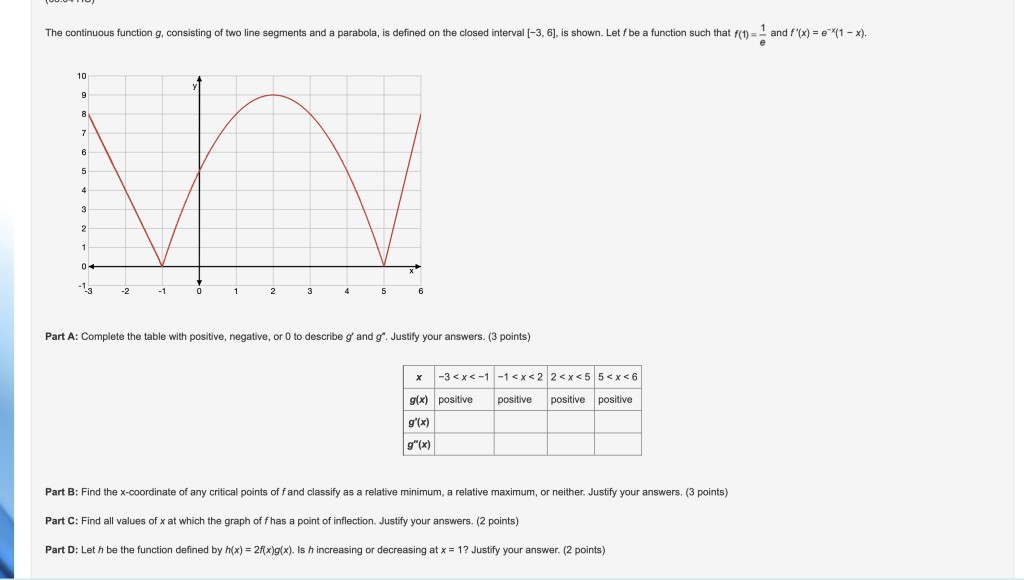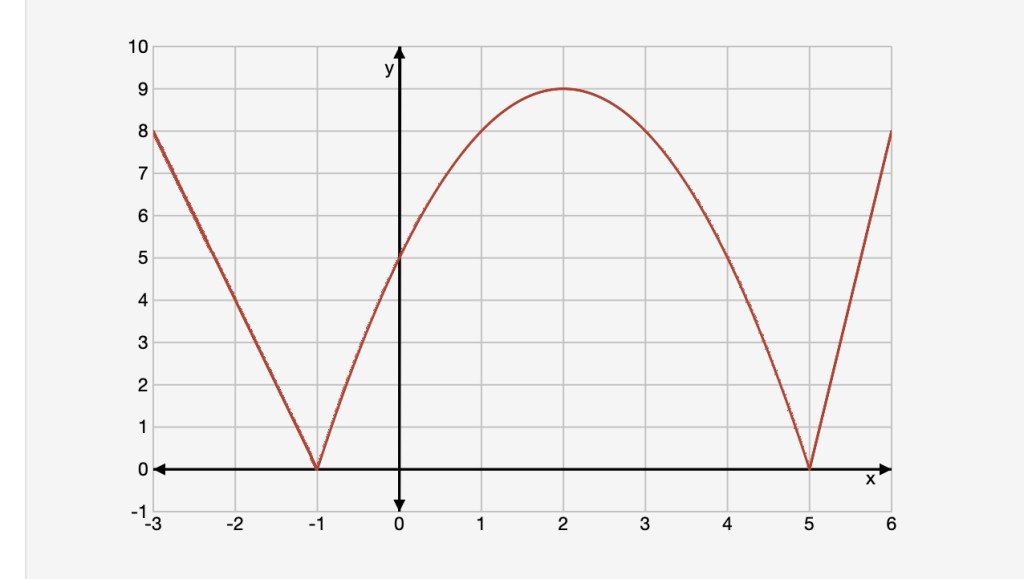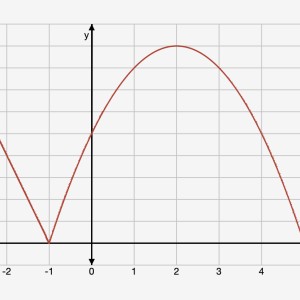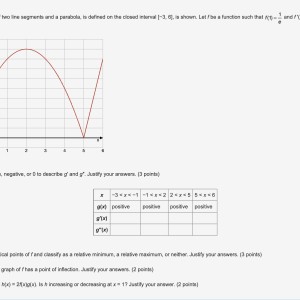Quick question regarding Analytical Applications of Differentiation
I am still a student, I am thrilled in learning, so please be throughly :)
Question pictures bellow:
The following quick question regarding: Analytical Applications of Differentiation
References:
https://teachingcalculus.com/2021/10/12/unit-5-analytical-applications-of-differentiation-2/
https://calculus.flippedmath.com/unit-5.html
Transcript:
The continuous function g, consisting of two line segments and a parabola, is defined on the closed interval [−3, 6], is shown. Let f be a function such that f(1) = 1/e and f ′(x) = e^(−x) (1 − x).
Part A: Complete the table with positive, negative, or 0 to describe g′ and g″. Justify your answers. (3 points)
Table attached
Part B: Find the x-coordinate of any critical points of f and classify as a relative minimum, a relative maximum, or neither. Justify your answers. (3 points)
Part C: Find all values of x at which the graph of f has a point of inflection. Justify your answers. (2 points)
Part D: Let h be the function defined by h(x) = 2f(x)g(x). Is h increasing or decreasing at x = 1? Justify your answer. (2 points)


Answer
- The questioner was satisfied with and accepted the answer, or
- The answer was evaluated as being 100% correct by the judge.
 Blue
Blue
- answered
- 1497 views
- $8.00
Related Questions
- Variation of Parameter for Variable Coefficient Equation
- Find $\lim_{x \rightarrow} x^2 \sin(1/x) $. Cite theorems used and show all work
- Calculus 1
- True-False real analysis questions
- Improper integral
- Please help me with this math problem I am struggling!
- Exercise on Ito's rule for two correlated stocks.
- Minimizing the cost of building a box



Low bounty for a multiple part question.
@blue can you please answer it, we don't turn things in near the deadline. Thanks